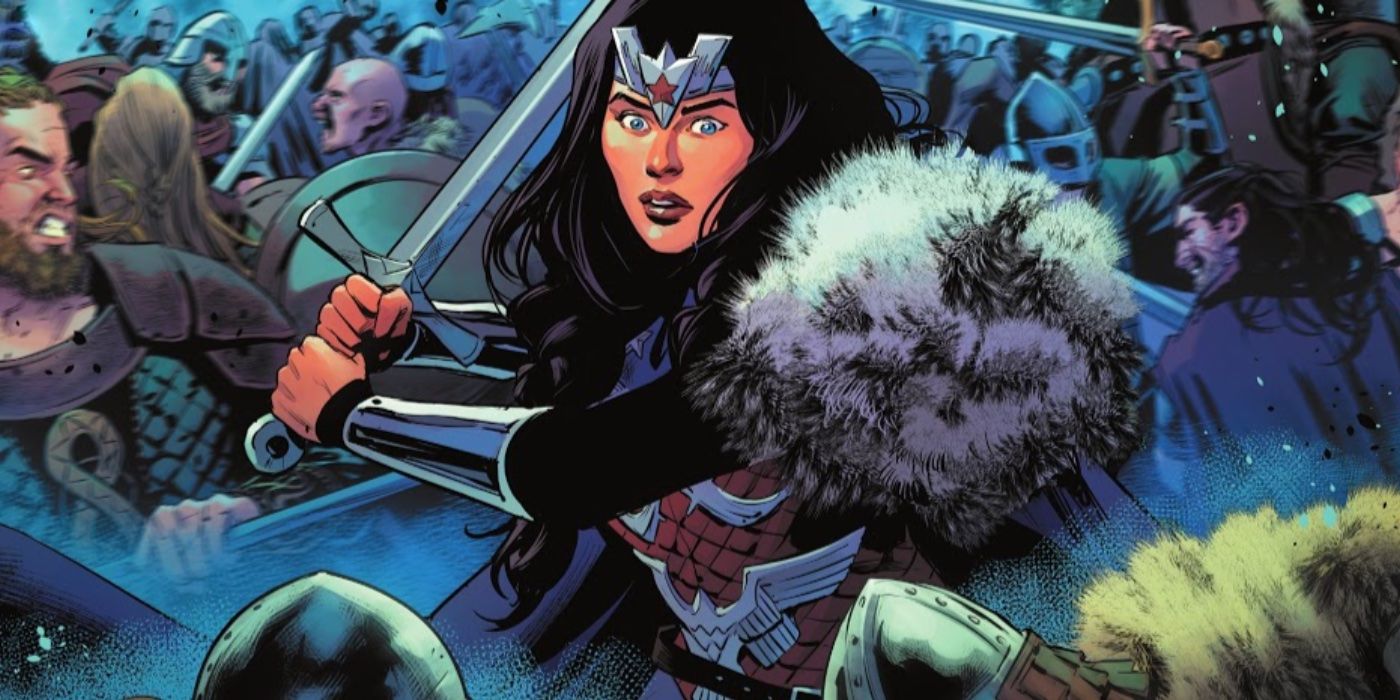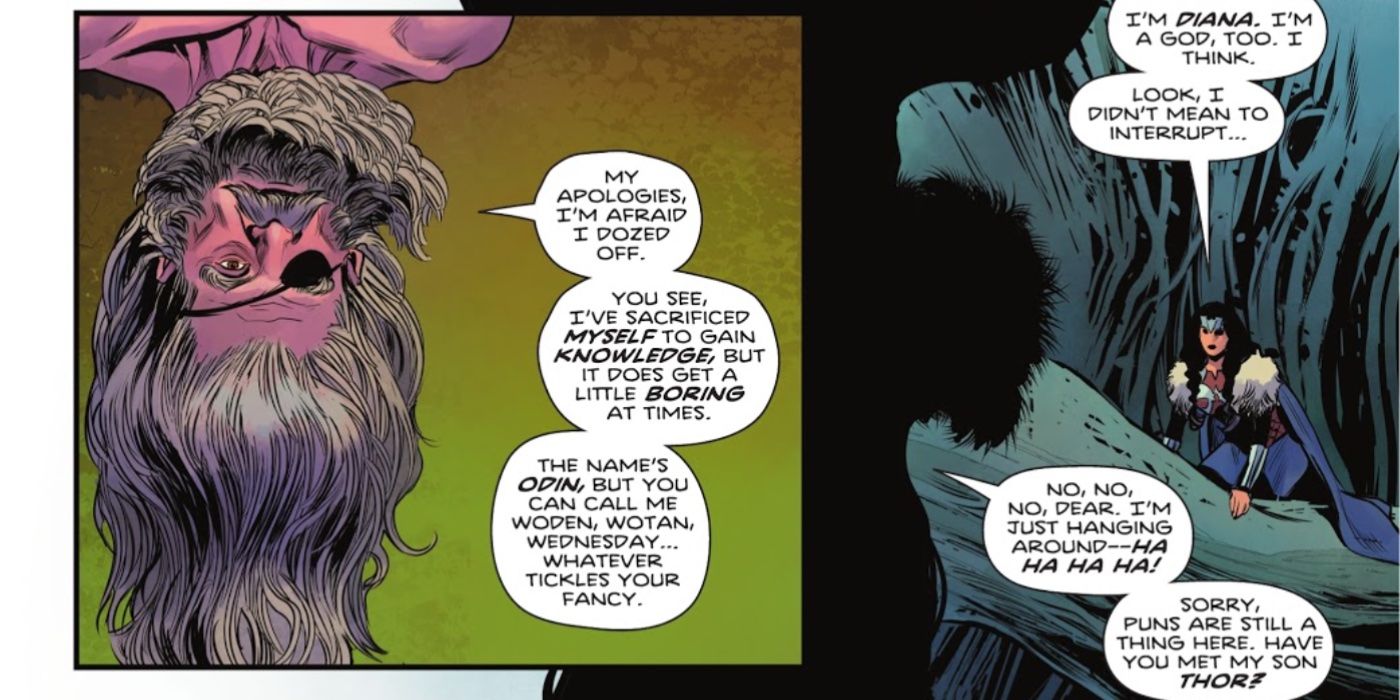Warning! Spoilers ahead for Wonder Woman #771
In the latest issue of DC Comics' Wonder Woman, it's been revealed that DC's version of Asgard and the Norse gods are based more on actual mythology, rather than how the MCU depicts them. Having found herself without her memory and in the Norse afterlife of Valhalla, Wonder Woman is caught in the midst of a never-ending cycle of great battles and Viking wars, all being led by DC's version of Thor, the God of Thunder. However, something wrong is happening to Valhalla, and the Valkyries have disappeared, motivating Diana to ally herself with the trickster squirrel Ratatosk to get to the bottom of what's going on, and she finds herself on a quest that would fit right in with the old Norse folktales.
In the Marvel Cinematic Universe, gods such as Thor and Odin are depicted simply as powerful beings from another world in the galaxy, whose dealings with Earth and its early societies created the perception that they were supernatural gods. This allowed for more cohesion with the rest of the universe, and films such as Thor: Ragnarok doubled down on the fact that Asgard was simply another inhabited planet in the cosmos (albeit with very powerful citizens committed to protecting the Nine Realms (or worlds) under its rule). As such, the actual Norse mythology they're based on has taken a backseat in Marvel's depiction, unlike with DC Comics' version seen in Wonder Woman #771 from writers Michael W. Conrad and Becky Cloonan with art by Travis Moore. In this issue, real mythology is front and center.
In this issue, Wonder Woman's interactions with Thor depict him as rather brutish, with his only concern being his own victories and valor as a warrior, to be celebrated with feasting before the next battle to come. Beyond that, he has no interest in much else, which tracks with his core warrior depiction in the actual mythology. As such, DC fans shouldn't expect him to join the Justice League anytime soon. Likewise, Diana finds herself assisting the squirrel Ratatosk in his classic mission of climbing Yggdrasil the World Tree, conferring with the serpent Nidhogg at the tree's roots, and the great eagle in the branches above, seeking to retrieve an egg to secure Nidhogg's help to find the missing Valkyries. Furthermore, Diana comes across a very different version of Odin compared to what's been seen in Marvel midway through her climb, though he's very much accurate with the old folktales.
In Norse mythology, Odin was a seeker and God of Knowledge, and the earliest tales in mythology did indeed refer to him as Woden or Wotan. While still the All-Father and king of Asgard, Odin is more eccentric than the regal version seen in the MCU played by Sir Anthony Hopkins, and the entirety of DC's version of Asgard as a whole is more self-contained thus far, rather than being interconnected to the rest of the DC Universe. Likewise, Wonder Woman's quest feels rather Norse, hiding herself within the eagle egg in order to trick the World Tree Serpent who would no doubt betray her.
However Diana's Norse adventure plays out, it's ironic that DC's way of differentiating its take on Asgard from Marvel's is to actually be more accurate to the original mythology and source material. Sure they're playing with the folktales somewhat by having Diana inserting herself to fix some new threat, but it's much closer than that of the MCU's depiction by a long shot. That being said, neither are inherently wrong, and it will be interesting to see how Wonder Woman's quest ends, and if Thor will eventually be motivated to help and join in for a team-up in future issues from DC Comics.


